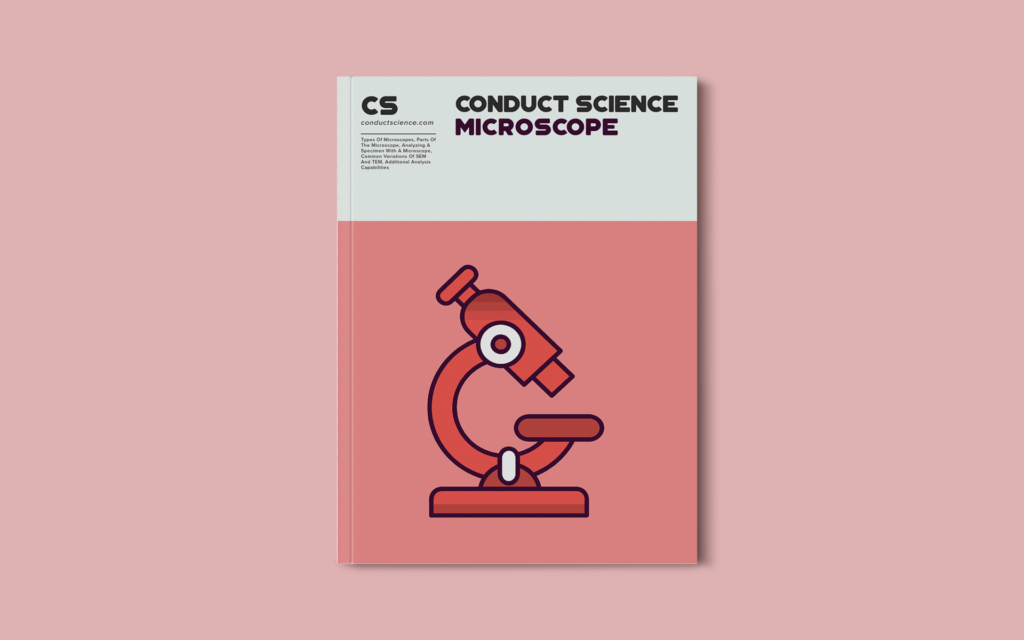

As an Amazon Associate Conductscience Inc earns revenue from qualifying purchases
Transmission electron microscopy (TEM) is an important tool in the expanding field of biomedical research and microbiology. The high resolution provided by the electron beams accelerated at high voltage makes the TEM indispensable for detailed analysis.
The specimen is an ultrathin section or a suspension on a grid. The electron beam is passed through the specimen. An image is formed by the interaction of the electrons with the sample as the beam is transmitted through the specimen. The image of the sample is then magnified and focused onto an imaging device.
Transmission electron microscopy is a major analytical technique used in the physical, chemical, and biological sciences. Transmission electron microscopy has a wide range of applications in cancer research, virology, materials science, nanotechnology, and semiconductor research.
The transmission electron microscope works like a slide projector. The electron source generates a beam of accelerated electrons which transmits through the specimen.
The transmitted beam replicates the reflected and scattered electron and forms an enlarged image of the specimen on the screen. The transmission of the electron beam is dependent on the properties such as density, composition, etc. of the sample or material being examined.
The basic part of the transmission electron microscope is the electron source. It is a V-shaped filament made of tungsten wreathed with an electrode. The electrode emits the electron beam from a small area of the filament.
The electron beam is then focused in a small, thin, and coherent beam by a pair of condenser lenses. The first lens determines the size range of the final spot that strikes the specimen. The second lens changes the size of the spot on the sample.
The condenser aperture restricts the electron beam and filters out the unwanted scattered electrons. The scattered and reflected electrons are then focused on an image by the objective lens. Then the projector lens expands the beam on the detector screen. The screen generates the image after the beam strikes it.
Extracellular vesicles (EVs) are found in blood and other body fluids. EVs are known for their diverse physiopathological roles and biomedical applications.
The characterization and quantification of EVs pose major challenges because of their small size and the lack of methods adapted for their study. Transmission electron microscopy has made significant contributions to the discovery and research of extracellular vesicles.
The TEM combined with receptor-specific gold labeling provided a detailed description of the size, morphology, distribution, and phenotypes of the main extracellular vesicle populations present in platelet free plasma (PFP) as well as different body fluid samples.
Transmission electron microscopy (TEM) enables direct structural analysis of nanostructured materials and is a powerful tool for the characterization of soft matter and supramolecular chemistry. It allows the imaging of a large range of objects, from biological systems, e.g., cells or proteins, to materials, extracellular vesicles, and aggregating materials.
The samples were analyzed using the drying, freeze-drying, negative or positive staining, embedding followed by sectioning, quick-freeze deep TEM, and cryo-TEM.
Transmission electron microscopy is the best-suited method for nanomaterials characterization, and the use of this technique could avoid over-interpretations. The use of transmission electron microscopy is leading to further advancement in the structural analysis of biological samples and soft materials.
Primary Ciliary Dyskinesia (PCD) is a heterogeneous genetic anomaly characterized by motile cilia dysfunction. The diagnosis of PCD is confirmed by the identification of ciliary ultrastructure defects or by the detection of biallelic pathogenic mutations in the PCD gene.
The assessment of ciliary ultrastructure by transmission electron microscopy (TEM) has been central to its diagnosis and research. The transmission electron microscopy provides improved spatial information and resolution compared to the single micrograph.
Electron microscopy has rendered new insight into the ciliary ultrastructure and ciliary function at a molecular and cellular level.
Liposome size and size distribution have a major effect on its use as a drug molecule or a diagnostic tool. Transmission electron microscopy is one of the most frequently used methods to characterize the ultrastructure of liposomes.
The liposomal particles are adsorbed on a carbon film grid, surrounded by a heavy metal salt, and air-dried during which the heavy metal salt embeds the particles of interest in the process. This grid is then imaged under the transmission electron microscope where the liposomes appear bright against the dark background of the heavy metal stain.
The transmission electron microscopy provided high-contrast images of the liposomes. The TEM has been widely used for the assessment of liposomes and nano-materials.
